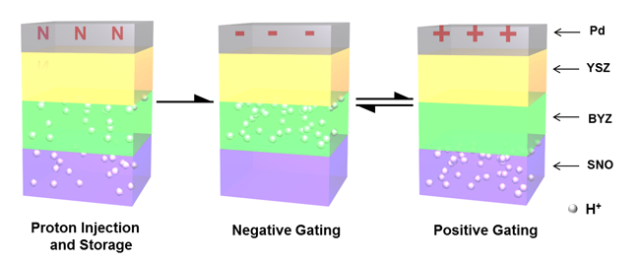
Image credit: Jian Shi
Researchers at the Harvard School of Engineering and Applied Sciences (SEAS) have engineered correlated oxide, a quantum material, to perform comparably with the best silicon switches.
As more compact devices are being built, the sizes of silicon transistors have to be shrunk. However, dissipation of heat, consumption of energy and other changes in behavior limit the reduction in their size.
A new material has been discovered in a fuel cell lab led by Associate Professor of Materials Science, Shriram Ramanathan. This material holds promise as a semiconductor for tunable photonic devices and 3D integrated circuits.
Correlated oxides have the ability to function in the same way at room temperature and at higher temperatures. This property will enable it to be easily integrated into electronic devices using currently existing production methods.
Silicon transistors have a minimum 104 on/off ratio. Until now, correlated oxides have achieved a maximum factor of 100. However, the new transistor that was made from samarium nickelate achieved an on/off ratio that was more than 105.
The researchers used a fundamentally different doping method, called solid-state chemical doping. They used hydrogen or lithium as the dopants and this helped them manipulate the band gap.
When the team applied an electric field, the electrons and protons of samarium nickelate moved in and out of their orbitals. This process was not influenced by temperature.
The material was in solid-state and it remembered its state when there was no power, which plays a critical role in energy efficiency.
Quantum-mechanical interactions influence the material properties of correlated oxides such as samarium nickelate. Ramanathan states, that in correlated oxides, when two electrons are located in contiguous orbitals, and if the orbitals are not occupied fully, then the electrons repel each other so that they stay fixed in one place.
The electron’s capability to move and the occupancy in the material’s orbitals are correlated. This decides the behavior of the material – whether it should behave like a metal or an insulator.
This study has been published in Nature Communications journal.